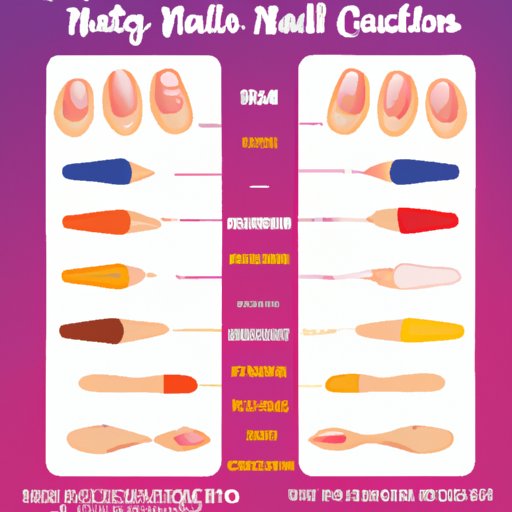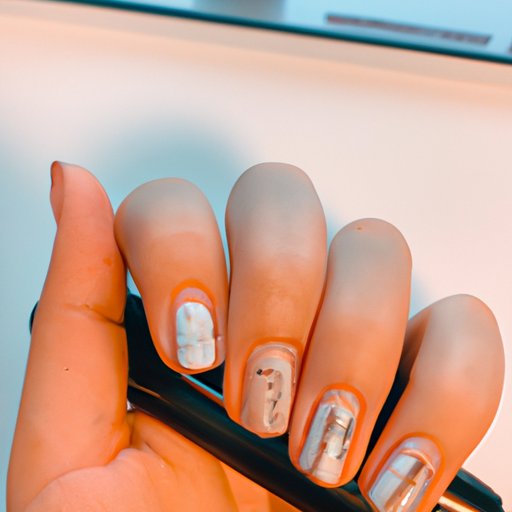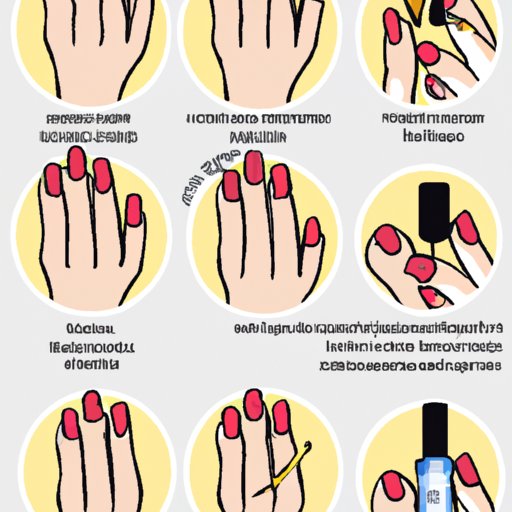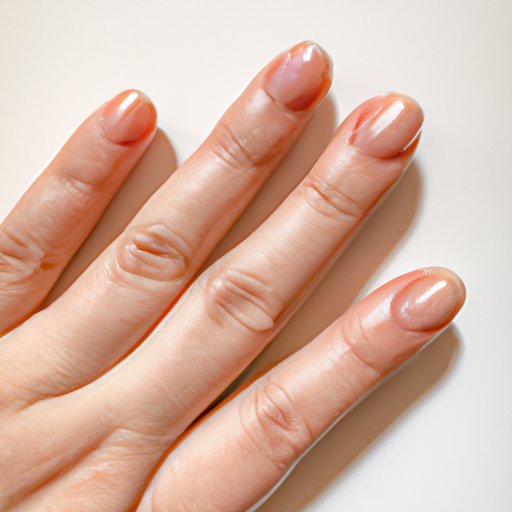Introduction
When it comes to understanding our health, most of us are familiar with the basics: eating a balanced diet, getting enough exercise, and getting regular check-ups. But there’s one area that often gets overlooked: nail health. While we may not think much about our nails, they can actually provide important clues about our overall health and wellbeing.
Nail health is defined as the condition of the fingernails and toenails. It includes the shape, color, texture, and thickness of the nails, as well as any irregularities or signs of infection. By paying attention to these details, we can gain valuable insight into our physical and mental health.
Examining the Signs: What Your Nail Health Reveals About Your Overall Well-Being
Understanding the different shapes and sizes of nails is the first step in assessing your nail health. Healthy nails should be even in length, with no ridges, pits, or other abnormalities. They should also be pinkish in color, with a healthy shine. Any changes in shape, size, or color could indicate an underlying problem.
It’s also important to check for signs of infection or discoloration. Infections can cause redness, swelling, and pain around the nail, as well as oozing discharge. Discoloration can range from white spots to yellow hues, and can indicate nutrient deficiencies or fungal infections. If you notice any of these signs, it’s important to see a doctor right away.
Finally, it’s crucial to look for any ridges, pits, and other abnormalities. These can be a sign of a wide range of conditions, including psoriasis, eczema, and thyroid problems. Paying close attention to your nails can help you spot any potential issues before they become more serious.

A Guide to Understanding What Your Nails Can Tell You About Your Health
Nail health can offer clues to a variety of health issues. Nutritional deficiencies, including iron, calcium, and zinc, can cause brittle, thinning nails. Hormonal imbalances, such as those associated with menopause, can lead to dry, splitting nails. And certain autoimmune diseases can cause the nails to become thick, pitted, and discolored.
By paying attention to changes in your nails, you can often catch problems early, when they are easier to treat. So it’s important to be aware of the warning signs and take note if you notice any changes.

Uncovering the Hidden Messages in Your Nails
Changes in color are one of the most common signs of a potential issue. White nails, for example, can indicate liver disease, while yellow nails may be a sign of diabetes or respiratory disorders. It’s important to note the exact shade of the color and any other changes, such as texture, to get a better idea of the underlying cause.
Thickening of the nails can also be a sign of a medical condition. This is especially true if it happens suddenly, as it could be a sign of a fungal infection or a reaction to certain medications. Vertical lines, known as Beau’s lines, can indicate malnutrition, trauma, or Raynaud’s phenomenon.
By looking closely at your nails, you can uncover hidden messages about your health. These clues can help you identify potential issues and take steps to address them.

Protecting Your Health: How to Spot Problems with Your Nails
The best way to protect your health is to regularly inspect your nails. Spend a few minutes each week examining your nails and noting any changes. Pay special attention to any discoloration, thickening, or other abnormalities.
If you do notice any changes, it’s important to see a doctor right away. Your doctor can diagnose the issue and recommend treatment options. In some cases, you may need to see a dermatologist or podiatrist to get a proper diagnosis and treatment plan.
Taking Care of Your Nails: What to Look For and Why It Matters
Proper hygiene is key to keeping your nails healthy. Be sure to wash your hands and feet regularly and dry them thoroughly. Choose mild soaps and moisturizers that won’t strip your nails of their natural oils. Avoid harsh chemicals or abrasive brushes, as these can damage the nails.
Choosing the right products is also important. Look for products that are free of harsh chemicals and contain nourishing ingredients, such as vitamin E, jojoba oil, and shea butter. Avoid acetone-based nail polish removers, as they can dry out your nails.
Finally, it’s important to avoid using too many harsh chemicals on your nails. Products like nail polish and nail hardeners can damage the nails over time, so limit your use of these products and opt for natural alternatives whenever possible.
Keeping an Eye on Your Nail Health: Signs of Possible Illness or Disease
Discoloration, brittle or splitting nails, and fungal infections are all signs of possible illness or disease. If you notice any of these signs, it’s important to see a doctor right away. Your doctor can diagnose the issue and recommend treatment options.
It’s also important to keep an eye on your nails for any signs of trauma or injury. Bruises, cuts, and scrapes can all lead to infection, so it’s important to seek medical attention if you notice any of these signs.
Conclusion
Nail health can provide valuable clues about our overall health and wellbeing. By paying close attention to the shape, color, and texture of our nails, we can uncover hidden messages about our physical and mental health. It’s important to be aware of the warning signs and take steps to protect our health. Regularly inspecting our nails and taking care of them with the right products can help us stay healthy and prevent any potential issues.
(Note: Is this article not meeting your expectations? Do you have knowledge or insights to share? Unlock new opportunities and expand your reach by joining our authors team. Click Registration to join us and share your expertise with our readers.)
